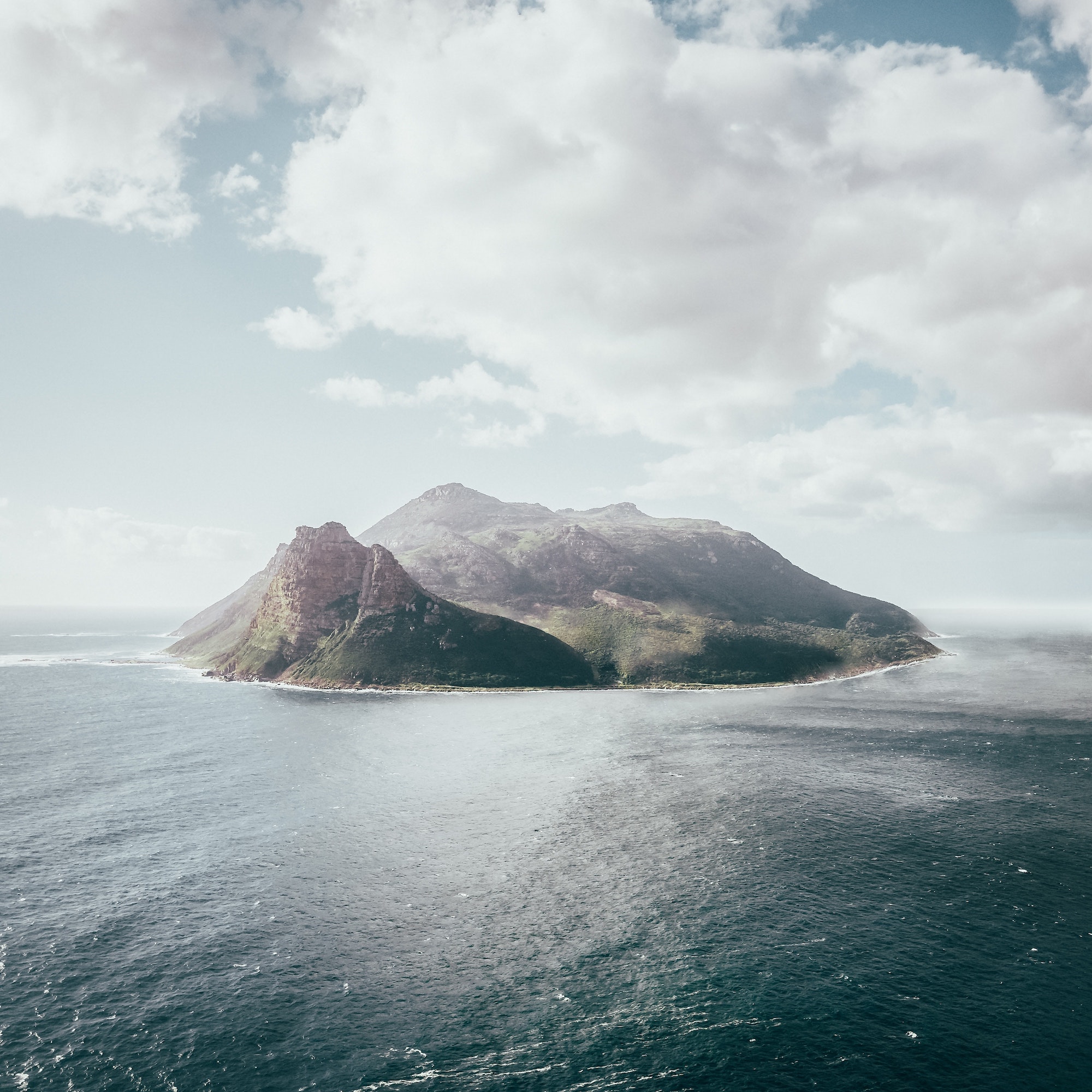
Insights: Island conservation and protection
Island conservation – preserving living history
Galápagos tortoises, Komodo dragons, Darwin’s finches—these are just a few of the many animals that call islands home. According to the Institute of Zoology, islands support 15-20% of all mammal, bird, amphibian and plant species. In doing so, islands play an important role in preserving the unique genetic material of species that often aren’t found anywhere else in the world.
However, our islands are also at risk. The same factors that make island-dwelling plants and animals so distinctive also leave them vulnerable to invasive species and disease, human development and the impacts of climate change.
In this article we take a look at what makes island wildlife so unique, and some of the exciting conservation work Wildlife Drones is doing to help protect our precious island wildlife.
Islands are biodiversity hot-spots, home to some of the most unique animals on Earth
While we find the idea of isolation intimidating, it’s this isolation that makes island ecosystems so unique. Indeed, islands have 9.5 times more endemic vertebrates, and 8.1 times more endemic plants, than mainland areas, and account for a disproportionate amount of the world’s biodiversity.
Forced to become highly adapted to their environments, many island animals evolve to develop distinctive characteristics that set them apart from their mainland counterparts, and it is this unique evolutionary history that islands preserve.
Some of the most fascinating island animals include:
Kakapo (Strigops habroptilus)
Nocturnal, flightless, and weighing up to 4 kilograms, the Kakapo—otherwise known as the ‘owl-parrot’—is one of New Zealand’s rarest birds. In the 1990s only 50 birds remained in the wild, primarily due to predation by introduced mammals, including cats and stoats, and rats, which eat their eggs and chicks. To conserve the birds, their entire population was relocated to three islands: Codfish Island/Whenua Hou; Te Hauturu-o-Toi/Little Barrier Island and Anchor Island.
As a result of their limited genetic diversity, and preference for breeding only when there is enough food around, Kakapo have low levels of fertility. The birds require careful management to maintain their population levels—all remaining Kakapo are fitted with radio transmitters, and the birds often receive supplementary feeding and assistance raising their chicks.
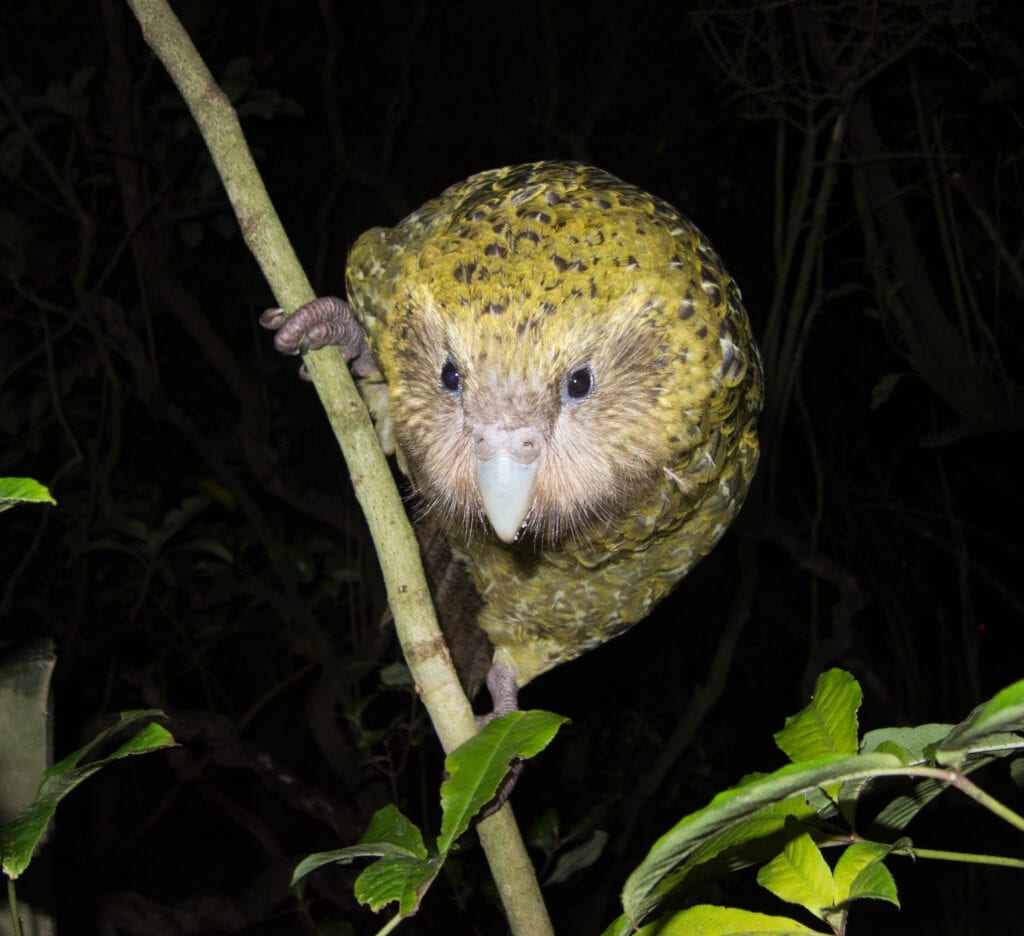
Vancouver Island Marmot (Marmota vancouverensis)
The Vancouver Island marmot is the only species endemic to British Columbia. Dark chocolate brown, with distinctive white patches on their heads and chests, the marmots are thought to have arrived on Vancouver Island from mainland Canada, by way of a land bridge, around 100,000 years ago. As sea levels rose, isolating the marmots from the rest of Canada, they evolved into the species they are today.
As a result of landscape changes, and shifts in predator-prey relationships, the Vancouver Island marmot population has declined significantly. In 1998, only 70 marmots were recorded on Vancouver Island. While the population has increased to approximately 200, thanks to concerted conservation efforts, the marmots remain classified as Critically Endangered by the IUCN.
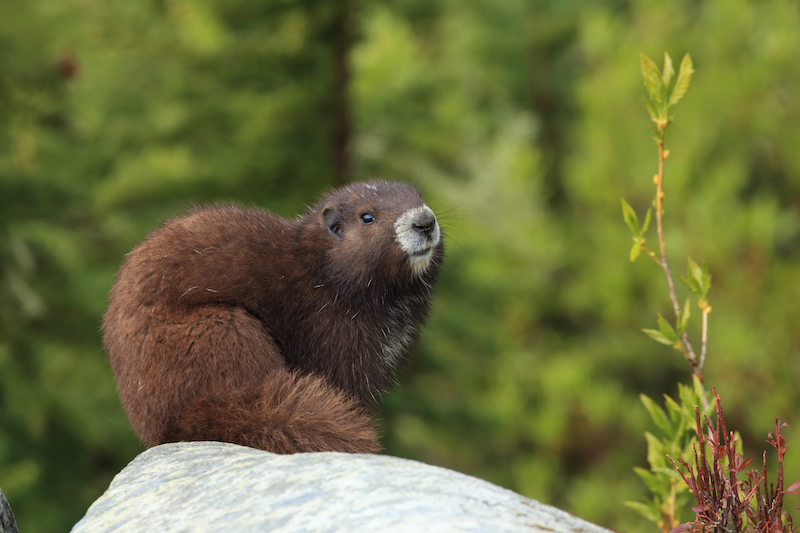
Galápagos Tortoise
With the Galápagos Islands home to 12 extant species of giant tortoises, it’s no wonder the Islands are named after them—galápagos is an old Spanish word for tortoise! It’s believed the giant tortoise arrived on the Galápagos Islands 1-2 million years ago from mainland South America. Once on the islands, the tortoise evolved into 14 different species, all differing in their appearance and distribution. Broadly speaking, there are two main tortoise shell types—domed and saddle-backed.
Weighing an average of 250 kilograms (and up to 400 kilograms!), giant tortoises spend the majority of their day resting. Amazingly, they can survive up to one year without food or water—which unfortunately contributed to their demise as sailors realised they could keep the tortoises alive aboard their ships as a source of fresh meat. The tortoises are now considered Endangered by the IUCN, with historical exploitation for meat and oil, as well as the introduction of pest species, including rats, pigs, dogs and ants contributing to their decline.
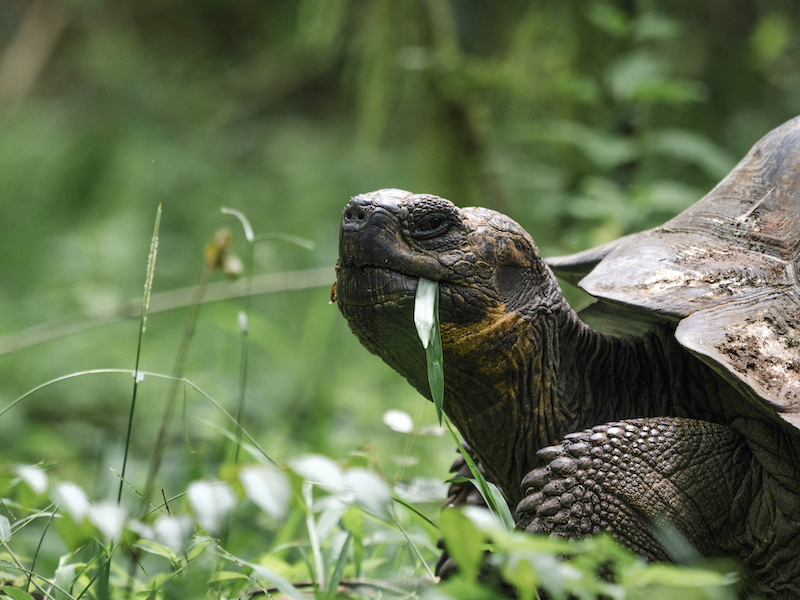
Marine Iguana (Amblyrhynchus cristatus)
Another Galápagos Islands local, the marine iguana is the only lizard anywhere in the world that lives and forages in the ocean. There are 11 subspecies of marine iguanas found across the Galápagos Islands. During the mating season, the males change colour to attract females, adopting a wide variety of colour patterns.
The marine iguana is currently classified as Vulnerable by the IUCN. They have been affected by introduced species, including dogs, cats, pigs and rats which prey on the reptiles. Climate change is also having an impact, with changing air and sea temperatures affecting the iguanas’ ability to regulate their body temperatures.
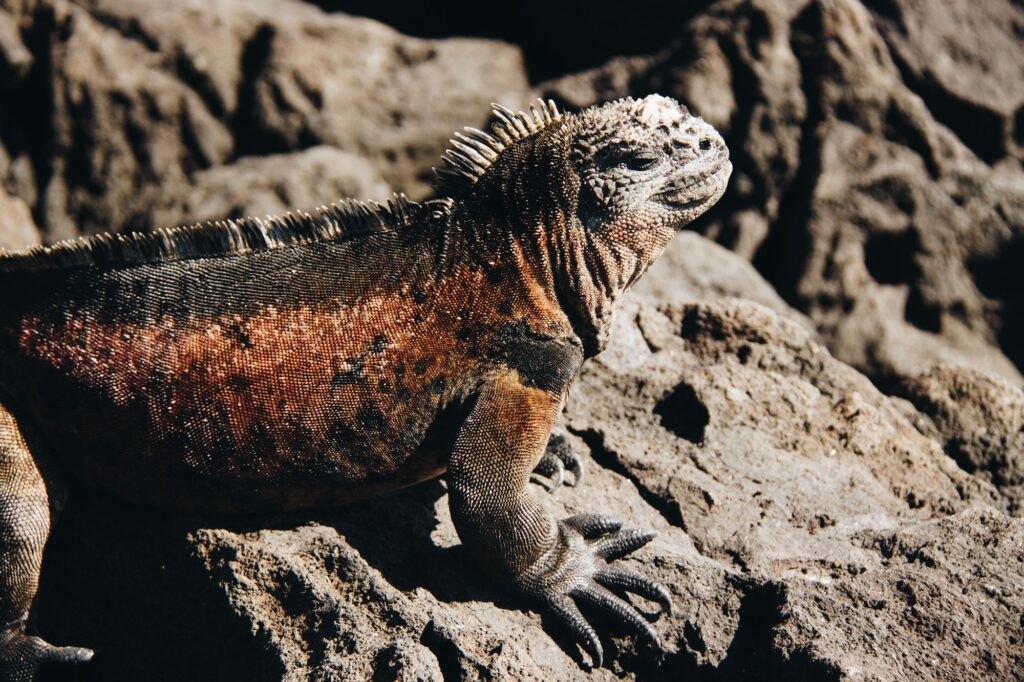
The uniqueness of island-dwelling animals makes them especially vulnerable to extinction
The same characteristics that make island-dwelling plants and animals so unique, also make them particularly vulnerable to extinction. Being so highly adapted to the conditions of their islands means these plants and animals are especially sensitive to environmental changes. Coupled with the fact that island species typically have relatively small populations, this makes them particularly vulnerable to:
- Introduced feral species, such as cats, rats, pigs and dogs, which were often introduced to islands by early explorers.
- Habitat transformation, through the impacts of human development such as the over-exploitation of natural resources, uncontrolled tourism development, and pollution.
- Climate change, and its resulting sea-level and sea-surface temperature rises.
- Natural disasters, such as cyclones, earthquakes, volcanic eruptions and storm surges, which disproportionately affect small island states.
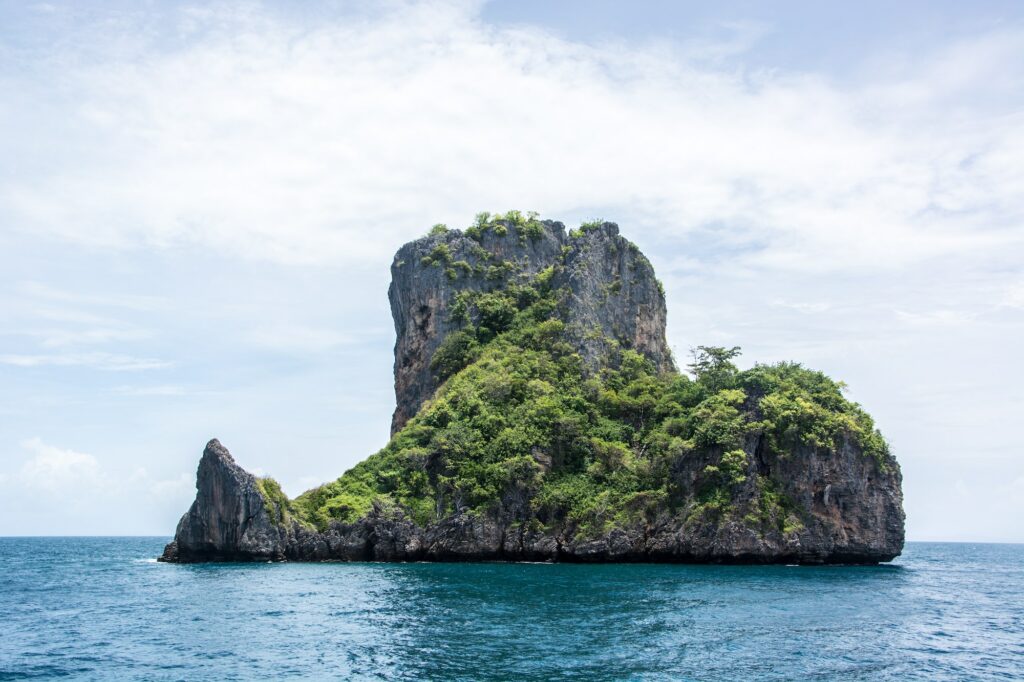
Island conservation is essential for halting biodiversity loss
Over the past 400 years, approximately half of all recorded animal extinctions were of island species. In Australia alone, islands provide important habitat for roughly one-third of all endangered species.
Around the world, positive steps are being taken to restore and conserve unique island ecosystems. For instance, 97% of the Galápagos Islands is now classified as national park, and numerous programs are focussed on eradicating invasive species from our islands. Some examples of island conservation efforts from the United States and Australia include programs on:
- San Nicolas Island in California, where Island Conservation has removed feral cats, in order to protect a unique fox subspecies endemic to the island.
- Hawadax Island in the Aleutian Archipelago off the Alaskan coast, where Island Conservation and the University of California’s Coastal Conservation Action Lab removed feral rats. Since the eradication of rats, monitoring studies have indicated an increased abundance of bird species that were previously highly susceptible to rat predation.
- Macquarie Island, which was declared pest-free in 2014 after a seven year eradication program. According to the Invasive Species Council, with rabbits, cats, mice and rats now gone, there are more native species living on the island than at any time in the past 150 years.
- Christmas Island, where a combination of baiting and bio-control through the introduction of micro-wasps are being used to control crazy ants.
Wildlife Drones has a strong track record of partnering with organisations to protect island animals
Keeping track of native and invasive species on islands through regular population monitoring is key to protecting our island biodiversity. However, this can be challenging on islands, where the terrain can be anything from rugged and mountainous, to swampy or densely forested. Rather than use traditional, manual radio-tracking methods, Wildlife Drones works with wildlife biologists and island conservationists to track animals using our drone-based system.
Here are just a few examples of other projects we’ve undertaken to help preserve threatened island species:
- We partnered with the New Zealand Department of Conservation to track Kākāpō on Whenua Hou Island – one of the last strongholds for the critically endangered bird. Compared with spending hours radio-tracking on foot across rugged and remote areas, we were able to track 19% (40 birds) of the global kakapo population at once, even locating birds on parts of the Island that were physically inaccessible to the rangers. Read more about our project here.
- We assisted Western Australia Department of Biodiversity, Conservation and Attractions (DBCA) with the ‘Return to 1616’ program on Dirk Hartog Island, that aims to restore the island’s ecology to its pre-European settlement state. Wildlife Drones helped track translocated Shark Bay Bandicoots, which had been introduced to the island. Read more about our project here.
To find out how Wildlife Drones can help you unlock the power of drones to more effectively monitor island wildlife, make an appointment to speak with one of our experts today.
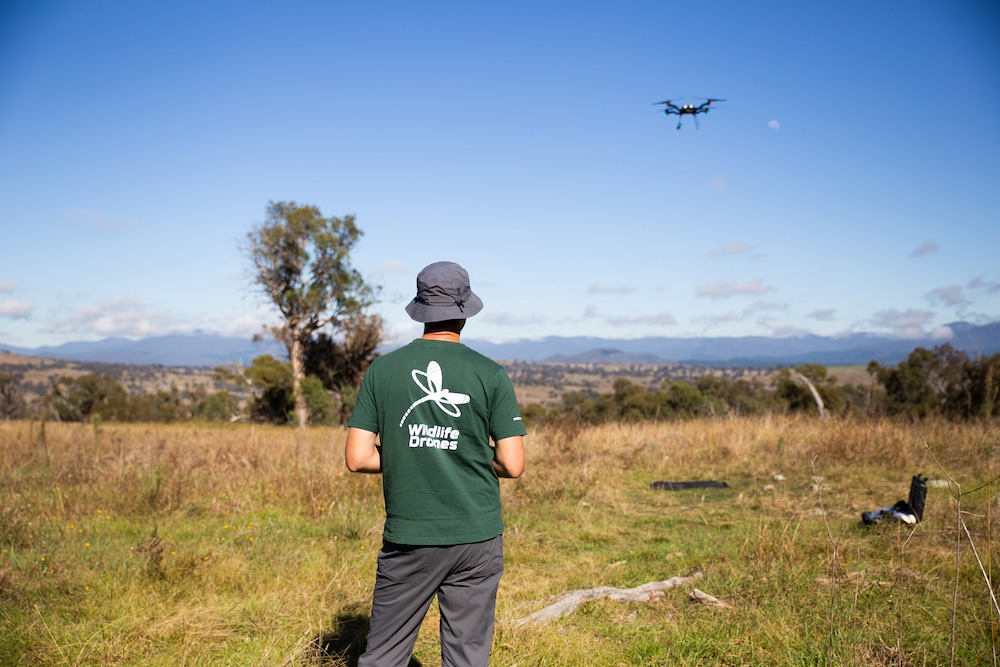

Alice Wisse is an experienced management consultant, freelance writer and content creator. She is an adept project manager and sharp analyst, who enjoys working with organisations to refine their strategic direction and effect positive change.

